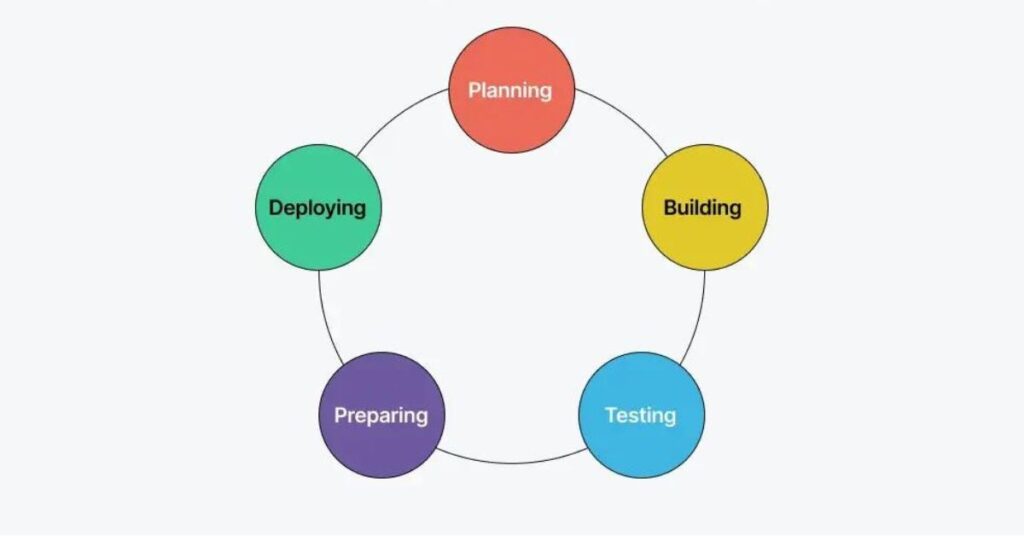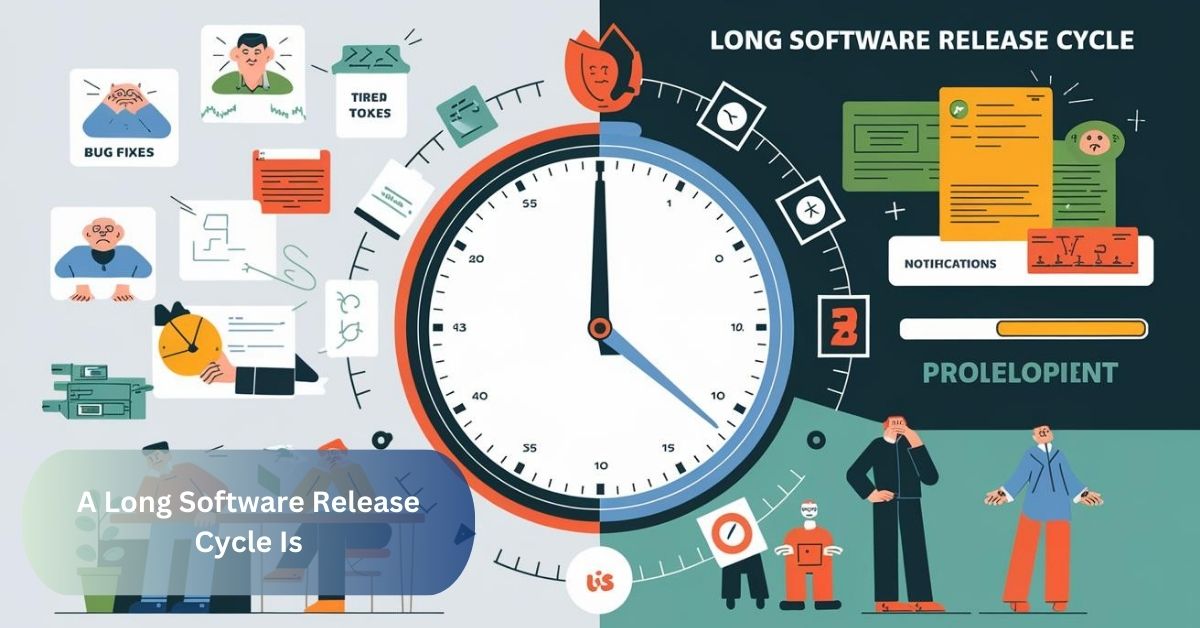During a long software release cycle I worked on, the endless testing and revisions felt like we were constantly chasing perfection. It taught me patience, but also how easily momentum can fade if the process drags too long.
A long software release cycle is an extended timeframe between initial development and final launch, allowing for in-depth testing and refinement. However, it can slow down innovation and delay market entry.
Understanding A Long Software Release Cycle
A long software release cycle is a period that extends from the initial development of software to its eventual release. A long software release cycle is often necessary for complex projects that require thorough planning and design. In a long software release cycle, each phase, including coding and testing, takes significant time to ensure quality and stability.
A long software release cycle can also help teams identify and fix issues before the software reaches users. However, a long software release cycle can slow down innovation, making it essential to balance thoroughness with efficiency. Overall, a long software release cycle is crucial for delivering a reliable and effective product to the market.
What Is A Software Release Cycle?
A long software release cycle is the series of steps that software goes through from initial concept to final launch. A long software release cycle includes phases like planning, development, testing, and deployment.

Each stage is designed to ensure that the software meets quality standards and user needs. While a long software release cycle allows for careful development, it can also delay the time it takes to bring the product to market.
Key Stages Of A Long Software Release Cycle:
1. Planning And Ideation:
Planning and ideation are the crucial first steps in software development, where ideas take shape and project goals are defined. This stage involves brainstorming solutions, identifying user needs, and laying out a clear roadmap to guide the entire project forward.
2. Design and Architecture:
- Design and architecture create the blueprint for the software, determining how it will function and look to users.
- This phase focuses on user experience, ensuring that the interface is intuitive and the layout enhances usability.
- Effective design and architecture align technical specifications with project goals, setting the stage for smooth development and future scalability.
3. Development and Coding:
Development and coding are the heart of software creation, where developers transform design plans into actual code. During this phase, programmers write the necessary scripts and build features, focusing on functionality and performance. Collaboration is key, as teams often work together to solve problems and refine the software for optimal user experience.
4. Testing and Quality Assurance:

- Testing and quality assurance are critical processes that identify and resolve issues, ensuring the software functions correctly and fulfills user needs.
- This phase involves identifying and fixing bugs through various testing methods, such as unit, integration, and user acceptance testing.
- Quality assurance fosters continuous improvement, helping teams validate features and enhance overall user satisfaction before launch.
5. Deployment and Launch:
Deployment and launch are the final steps in bringing software to users. During this phase, the completed software is installed on servers and made accessible to the intended audience. Successful deployment ensures that everything works smoothly, allowing users to enjoy the new features and functionality right away.
Why Opt For A Long Software Release Cycle?
Opting for a long software release cycle allows teams to ensure quality and stability before launching their product. This thoughtful approach helps minimize risks and creates a better experience for users.
- Thorough Testing: More time for extensive testing reduces the chances of bugs.
- Enhanced Quality: Developers can focus on perfecting features and design.
- User Feedback: Longer cycles allow for incorporating user feedback into improvements.
- Risk Management: Extended timelines help identify potential issues early on.
- Adaptability: Teams can respond to changes in technology or user needs without rushing.
Pros Of A Long Software Release Cycle
1. Thorough Testing and Stability:

Thorough testing and stability are vital to ensuring software performs reliably under various conditions. This process involves identifying and fixing bugs, optimizing performance, and verifying that the software meets user expectations before it goes live.
2. Increased Focus on Quality:
- Increased focus on quality means dedicating time to refine every aspect of the software, leading to a polished final product.
- This emphasis helps identify potential issues early, preventing costly fixes and enhancing user satisfaction.
- A commitment to quality fosters trust with users, as they receive a reliable and functional software experience.
3. Risk Reduction:
Risk reduction involves carefully evaluating and addressing potential problems during the software development process. By identifying issues early on, teams can implement solutions that minimize the likelihood of significant setbacks after the software is released.
Challenges Of A Long Software Release Cycle
1. Slow Time-to-Market:
Slow time-to-market occurs when software development takes longer than expected, delaying its release to users. This can result in missed opportunities and allow competitors to gain an advantage, making it crucial to find a balance between thoroughness and speed in the development process.
2. Increased Costs:

- Increased costs arise from extended development timelines, leading to higher expenses for resources and personnel.
- Ongoing maintenance and updates during a long cycle can further strain budgets, as teams must stay engaged for longer periods.
- Additional testing and quality assurance efforts also contribute to costs, requiring more investment to ensure the software meets standards.
FAQ’s
1. What is the longest life cycle phase in software engineering?
The longest life cycle phase in software engineering is typically the maintenance phase. During this time, software is continuously updated, patched, and improved based on user feedback and changing technology, which can extend for years after the initial release.
2. What is a good release cycle?
A good release cycle is a balanced process that allows for timely updates while maintaining high-quality standards. It ensures that software is delivered efficiently, incorporating user feedback and adapting to changing needs without compromising reliability.
3. What is system software long?
System software long refers to software designed to manage and operate computer hardware and provide a platform for application software. This type of software, including operating systems and utilities, works in the background to ensure that everything runs smoothly and efficiently.
4. What is LTS in software release?
LTS, or Long-Term Support, in software release refers to versions that receive extended maintenance and updates for an extended period. This approach ensures users benefit from stable and reliable software without needing frequent upgrades, making it ideal for critical applications.
5. What is full cycle software development?
Full cycle software development encompasses the entire journey of a software project, from initial idea to final deployment and beyond. This approach involves planning, designing, coding, testing, and maintaining the software, ensuring a comprehensive process that meets user needs effectively.
Conclusion:
A long software release cycle is essential for ensuring high-quality products through thorough testing and careful planning. While it may slow down time-to-market, the benefits of stability and reliability often outweigh the drawbacks.
Ultimately, balancing a long cycle with efficient processes can lead to successful software that meets user expectations.

